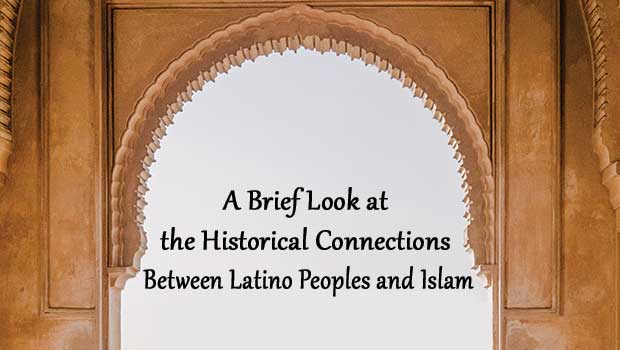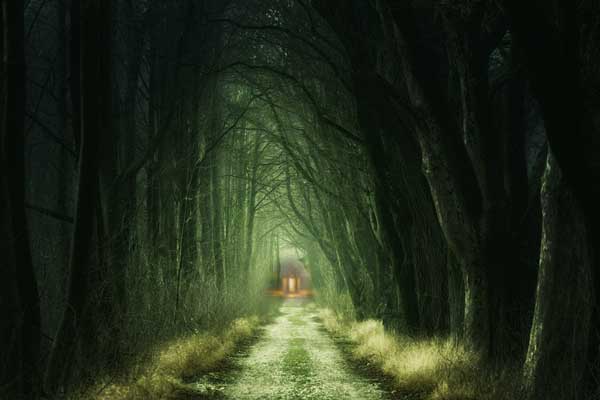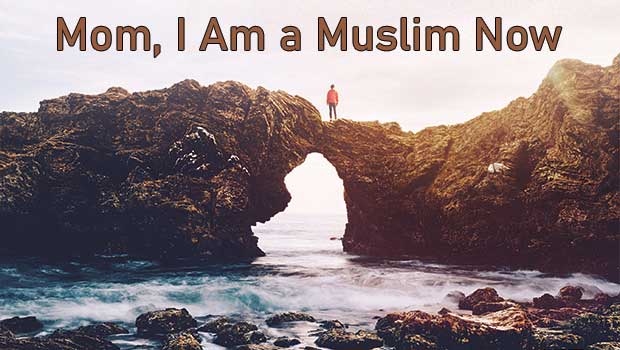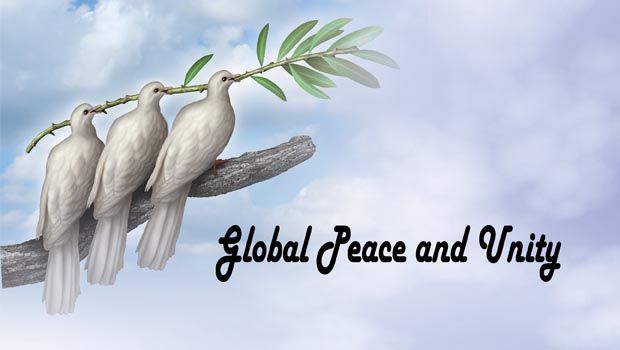A Brief Look at the Historical Connections Between Latino Peoples and Islam
The dawn of the Spanish incursion brought to the Americas a legacy that was rich and empowering. When Spaniards entered into the “New World” circa the late 15th and early 16th centuries, they brought with them the knowledge of Muslim culture. The cultures of Muslim Arabs, Africans, and Asians had a great influence with regards to knowledge in science, medicine, technology, navigation, agriculture, culinary arts, architecture, cultural art forms, literature, language, and of course Islam.
The Castilian or Spanish language has great grammatical and lexical influences from Arabic, that evolved during the time that Muslims entered the Iberian Peninsula, Al-Andalus or Andalusia. At one time, during the 5th century, a tribe called the Vandals, resided in Spain. Even though modern historians have revised earlier historical characterizations of this tribe as barbarian and destructive of culture, the etymology of the English word “vandal” (i.e., one who destroys property) relates to this tribe. With the coming of the Muslims to Spain and the flourishing of the Andalusian culture, we see a true correlation between the name of the region, Al-Andalus, and the culture that emerged — “al-andalus” means, in Arabic, “to become green at the end of the summer” – connoting a time of rejuvenation and flourishing.
Spanish music was directly influenced by Arab music, poetry, and instrumentation during the Islamic era. To this day, Flamenco dancers, guitarists, and literary artists encapsulate the styles that emerged in emulation of the qasidas (poetic verses) and mellifluous recitations of the Quran. An array of instruments was introduced to the culture like guitar, lute, daafda, tabla, uwd, mizmar, rigg, nay, and santur, forever revolutionizing Western European musical sound and vocalization.
It must not be forgotten that Muslims actually preceded the entrance of the Spaniards into the Western Hemisphere. There is extant information and evidence of this, to the extent that earlier African and Asian explorers came to the Americas, made contact with its indigenous peoples, and also settled there. The Arabic language and culture were shared with the native peoples, as was the belief/lifestyle system of Islam. The inherent qualities of Islamic culture survived, while “New World” names found their way into the first names and surnames of the Spanish-speaking peoples of the Americas. Names like Ismael, Medina, Waqim, Guzman, Moreno, Guadalupe, Ibrahim, Yunis, Benjamin, and Maria (Maryam) are some examples of this.
In the 1948 publication, “Great Men of Color,” historian J.A. Rodgers pointed out that some tribes of indigenous native people of Honduras, called the Almamy, take their name from the Arabic Al-Imamu (Africanized Arabic for religious leader). This was a designation given by Africans who settled in the region during the pre-Colombian Period, intermarried with the people, and shared the religion, culture, and language. In this case, when Cristobal Colón (Christopher Columbus), and later his son, entered the region, it was found that numbers of the native peoples could speak Arabic! This has been documented in the explorers’ logs. We can speculate about the Spaniards who controlled one of the largest tracts of land on continental North America naming the region “California.” Perhaps it comes from “khalif,” denoting Muslim rule over that territory.
Spaniards built landmarks, raising edifices in a style that was consonant with Muslim architectural design, which can still be seen today. Their outposts and establishments hearkened back to Muslim Spain. They used adobe building materials and native ingenuity to do it. This can be seen all the way from St. Augustine, Florida, to Arizona, New Mexico, parts of Colorado, and California, and in Mexico and all over Latin America.
The Rich but Troubling Legacy of ‘Las Americas’
Perhaps non-Muslims don’t realize the rich legacy that Latinos bring to the social and cultural fabric of “las Americas” (the Americas); we can refer to the Latino contribution as “la herencia” (the heritage). There also tends to be a stereotypical understanding about Latinos and who we are. Latinos are a diverse group in and of themselves. With the advent of the European invasion, indigenous peoples became more diverse as Europeans, Africans, Asians, and Native First Nation peoples intermingled and interbred.
This intermixing, through choice or force, produced a wide variation in the culture of Latino people, and the Mestizos, Mesclas, Criollos (Creoles), and Mulattoes came into being. This often occurred through the practice of miscegenation (cohabitation or marriage between two people from different racial groups). Thus, Latinos’ appearance ranges from the lightest to the darkest skin color, with a full range of hair colors and textures, from straight to tightly curled, and a range of other physical features evident in a multi-ethnic society.
There was a hierarchy of classes based on physical features or “pure” ethnicity, but the class divisions that sprang up in the Americas were socially more flexible, and the society in general was more tolerant of multi-ethnic mixing. Nonetheless, over time, the institutional systems of European racismo (racism) found their way into these neo-cultures, and the prejudice and racist discrimination is still a part of the cultural, economic, and sociopolitical struggle of Latinos.
The Term “Latino”
The word “Latino” is derived from the term “Ladino.” Although it means something different today, the term “Latino” began as a derogatory name set upon the colonized peoples of the “New World” who were subjugated, oppressed, and despised by the Spanish. The word “Hispanic” has a similar point of origin. Its root is in the old Latin term for Spain, which is “La Hispana.” Thus, “Hispanics” were the subjects or oppressed, enslaved people in “Latin America” and its regional areas colonized and controlled by Spain.
During the Inquisition, or “La Reconquista,” the Spaniards worked hard to regain dominance of the Iberian Peninsula (Al-Andalus). They reconquered, tortured, and killed Muslim populations, all in an effort to drive them out. The Spaniards were also extremely aggressive toward the Jewish populations, forcing them, and Muslims who remained, to convert to Christianity. The Muslims were called “Moriscos,” a term that belittled them as caricatures of a formerly great people and culture. This term especially alluded to the darker Africans of Morocco, called “Moors” or “Blackamoors,” and was also a likely corruption of the name used by the Muslim group called the “Muhads,” Muslim reformers who came in the last third of the Muslim Empire in Spain.
Other Belief Systems
Christianity was not ordinarily used by Europeans as a tool of liberation; rather, it was used as a tool of oppression, enslavement, and colonization. Over time, it became endemic to the regions where Native populations, Africans, and Europeans lived. We find Catholicism, Pentecostalism, even crude forms of Christian Revivalism, practiced among Latino peoples.
Other belief systems are also practiced, and they include “La Regla Lekumi” otherwise known as Yoruba / Santeria, Palo Monte, Abaqua, Candoble, and Voodo. They are ancient African-based belief systems, brought mainly from the regions of Nigeria in West Africa by Africans during the slave epoch. These belief systems evolved in the New World, and have also been mixed with Christianity and some aspects of Islam alike.
To fully understand the faith-based societies that have developed in Latin America, it is also necessary to look at other historical influences, but I have presented a brief summary of the Latino culture, diverse in experience, development, and history.
Opportunities for Dawah
The Latino experience is indeed broad, and needs further research and examination. Islam’s impact on Latino culture goes back for many decades, through the centuries. Here of late, indigenous Muslim communities have emerged in Latin America in such places as Mexico, Cuba, Puerto Rico, and other Spanish-speaking areas. This is significant, since the greater majority of groups in these regions have followed or practiced forms of Christianity. Islam has been practiced by Latinos in the contemporary age for more than four decades, especially in the continental United States, including its territories. In fact, one of the first 21st century Latina indigenous Muslims of Cuba was recently born in the Muslim community there!
No doubt, Islam is on the rise in the Latino world. Actually, it continues to be part of a global phenomenon, in which Latinos are in the vanguard of a movement which is steadily emerging from the Latino communities of the Americas. With this knowledge, the Latino Muslim has the opportunity to appeal to a shared sense of identity, spiritual orientation, and cultural practice with other Latinos and non-Muslims. This is truly a potent dawah, or outreach, tool, openly inviting others to Islam and its lucid, profound enlightenment.





